The people with the impossible task: Clearing Iraq of its landmines
Iraq is thought to be the most landmine-contaminated country in the world. For almost 30 years, a British agency has been tirelessly clearing the territory of explosive devices. David Barnett went out there to see their work

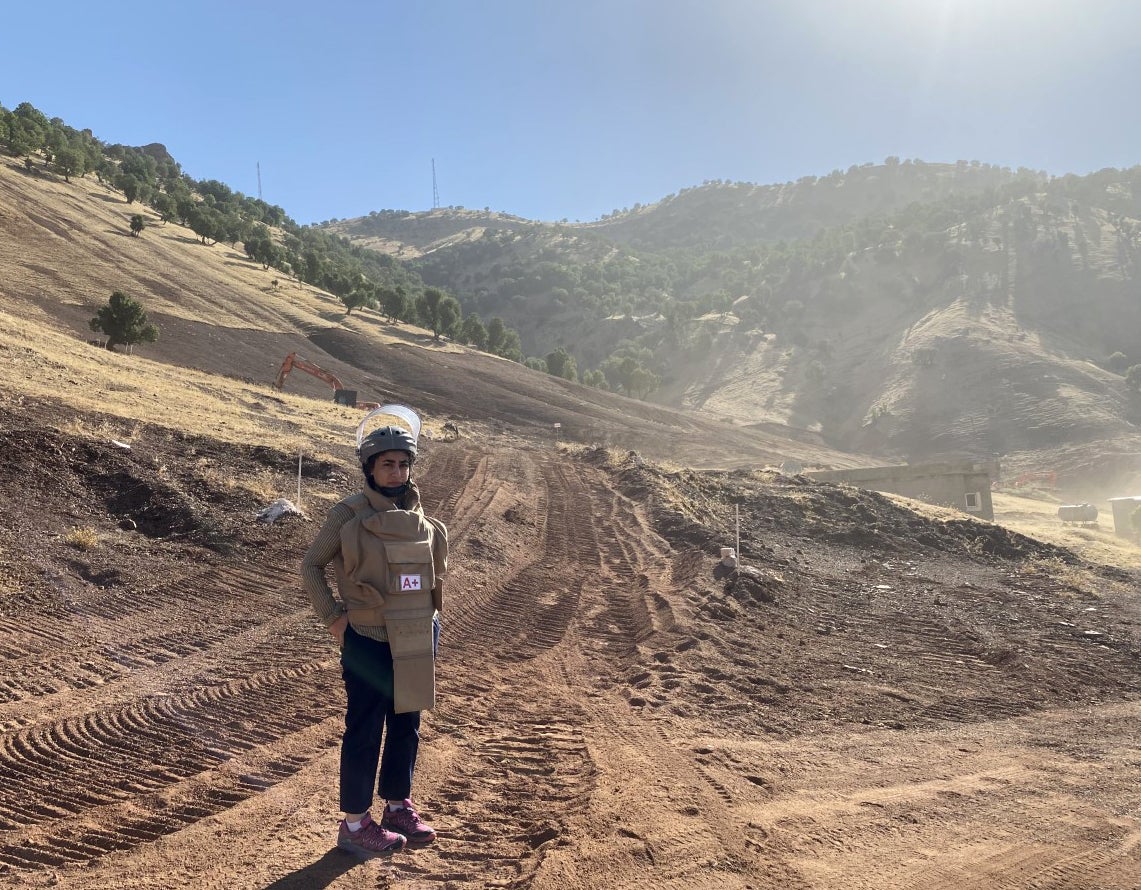
At this time of year, the plains above Tulaband in the Kurdistan region of northern Iraq are tinder-dry and hot, yellow scrubland rolls off in every direction until it meets the azure sky, and the sun bakes the ground with temperatures nudging 50C.
It is stark but beautiful, and it is where 19-year-old shepherd Raad Faris allows his flock to roam, with nothing between him and his village of Gazakan except for endless grass and rocks.
But today, something else...
Nestled beside two small stones is a rusting metal tube, just shy of a foot long. Raad had spotted it while his flock was grazing and immediately ran down to the village to call it in. It was then that I drove up to the grazing lands with the team from the Mines Advisory Group.
Raad takes us to the spot, where the item is identified as a piece of unexploded ordnance, probably dating back to the Iran-Iraq war in the 1980s. It has been sitting here, undisturbed, on the high plains for more than 35 years, waiting to be stumbled upon and wreak carnage, decades after it was first fired from a mortar gun.
And it is not alone. A conservative estimate from the United Nations puts the number of landmines and unexploded ordnance in Kurdistan alone at more than 10 million. The Mines Advisory Group (MAG) has been working in this region at the request of the Kurdistan government since 1992, during which time it has removed something like 170,000 landmines, 18,000 improvised explosive devices (IEDs) and 2 million pieces of unexploded ordnance (UXOs) like the one Raad has found.
The political history of Iraq is a complicated, many-tentacled beast, and has led to the proliferation of such devices, especially in the northern territories. Vast areas have been contaminated with landmines and UXOs since the Iraq-Iran war (1980-88), when mines were laid along the border and the exchange of mortar fire left millions of explosives littering this beautiful, mountainous landscape. From that time on, through the 1991 Kurdistan uprising, 2003’s protracted Iraq war and onward into the era of Isis, the use of these insidious weapons has continued unabated.
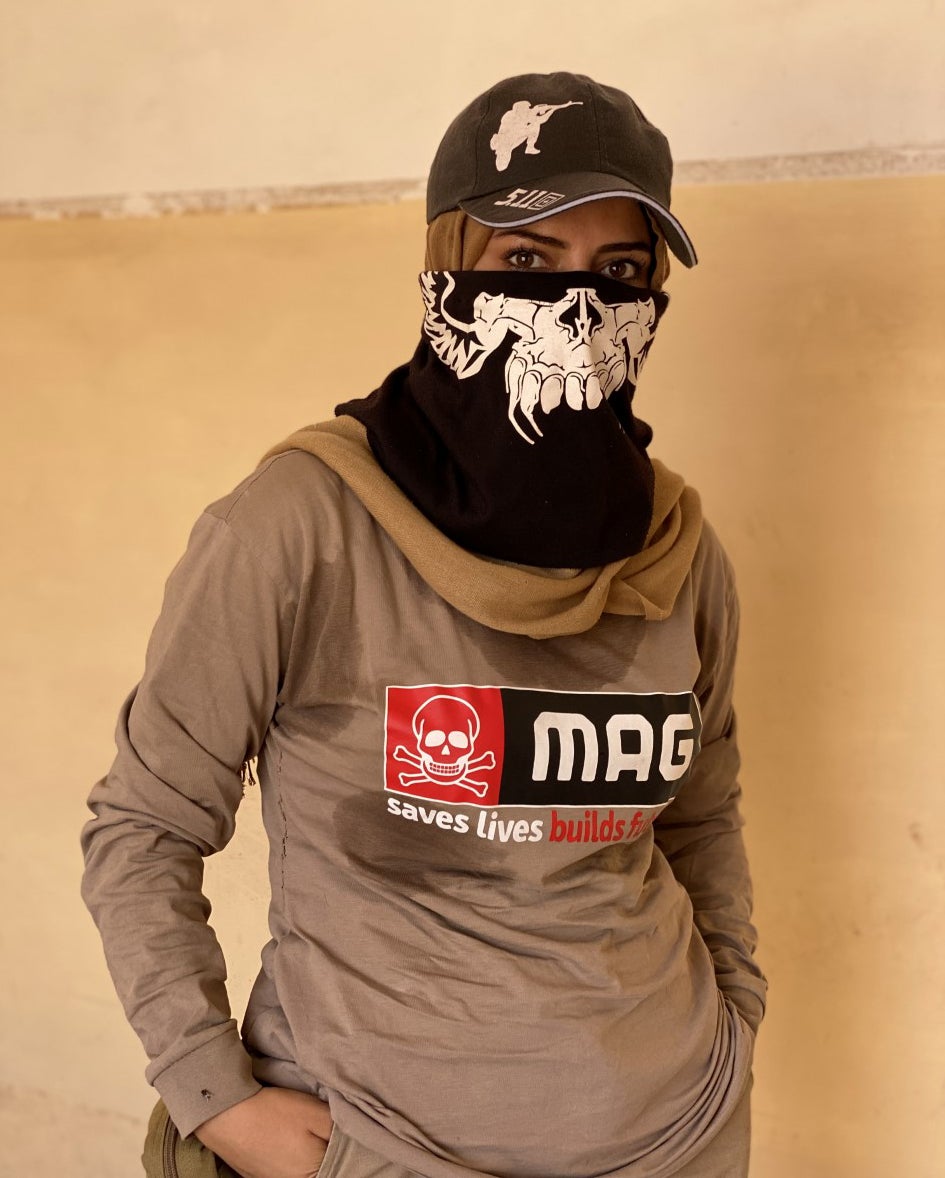
So now the country has layer upon layer of contamination, almost geological strata of unexploded devices. Whole villages stand empty, thousands of people live in refugee camps, and acres of arable land are unusable by communities whose only means of survival is subsistence farming. And this is the main thrust of MAG’s mission in Iraq: to return the land to the people battered by decades of war, who are still paying the price, years after conflicts have ended.
One of the problems with trying to clear a country such as Iraq of contamination is that there is often no official record of where mines were laid
MAG was set up in 1989 by Rae McGrath, working out of a small office in the Lake District. Rae had been a British army engineer and had experienced first-hand the impact of landmines and unexploded bombs on civilian populations in former war zones, so when he left the military and spent time working with non-governmental organisations (NGOs), especially in Afghanistan, he was determined to draw the world’s attention to the scale of the problem. His brother Lou joined the group in 1991 and it began its first mission in Iraq the following year.
Now MAG is headquartered at Peter Street in Manchester, where the 70-strong domestic staff coordinate the work of 5,000 MAG operatives across the globe, from Laos to Cambodia, Angola to Bosnia, Lebanon to Somalia. MAG is an NGO itself now, and in 1997 it shared the Nobel peace prize for its work.
Although a very British organisation, the ethos of MAG is to train people in the countries in which it operates to help themselves, which is why the bulk of the 770 MAG employees in Iraq are native to the country, often working in areas where they themselves grew up.
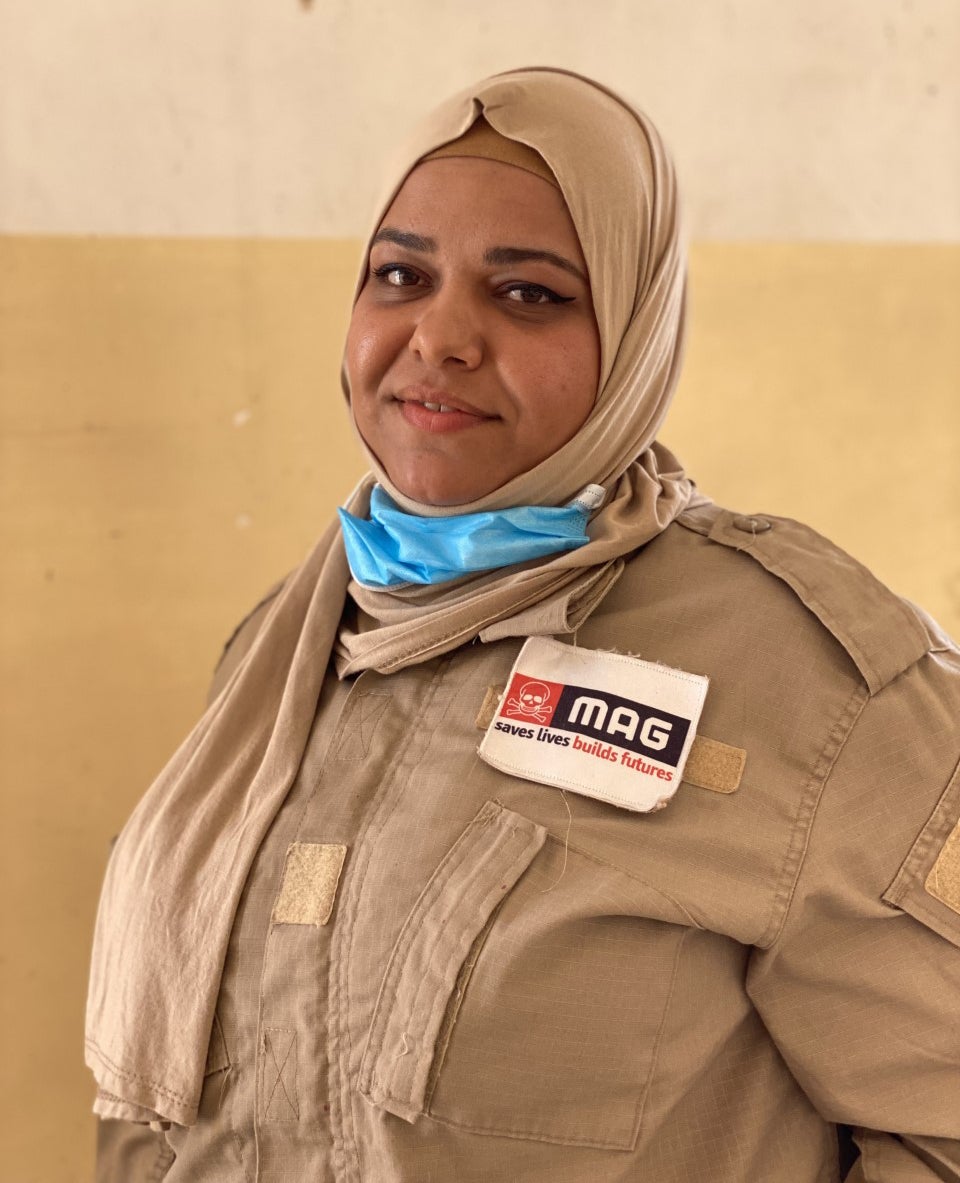
One of the problems with trying to clear a country like Iraq of contamination is that there is often no official record of where mines were laid. Isis, for example, mined areas indiscriminately, booby-trapping houses, schools and fields as it was forced out of its occupied zones. With what MAG calls “legacy mining”, though – contamination dating back to the Iran-Iraq war – it is often simple to guess where mines would have been laid due to the strategic importance of some areas during the conflict.
Wlyawa village, up in the mountains just a handful of miles from the border with Iran, is one example. We arrive there early in the morning, not long after sunrise – Iraq has been experiencing record temperatures, and it is impossible for the MAG teams to work in full PPE gear in 40C+ heat, so early starts are a necessity.
It is a stunningly beautiful landscape, redolent of Tuscany: lush, wooded mountainsides looking out over undulating hills. It’s a far cry from the image of Iraq as concrete cities sitting in endless desert. But for its decades of conflict, one could imagine this part of the country as an elite holiday destination.
But the landscape all around us is seeded with death, miles and miles of minefields laid as a buffer between Iran and Iraq. And though that conflict was half a lifetime ago, its repercussions are still felt.
Up on the hillside, heavy plant machinery operates on the steep slopes. From a distance it looks as though the diggers might be preparing an area for development. What they are actually working on is the first stage of a MAG operation, literally scraping off the top layer of land and sieving the soil, in the hope of finding and clearing landmines hidden below the surface.
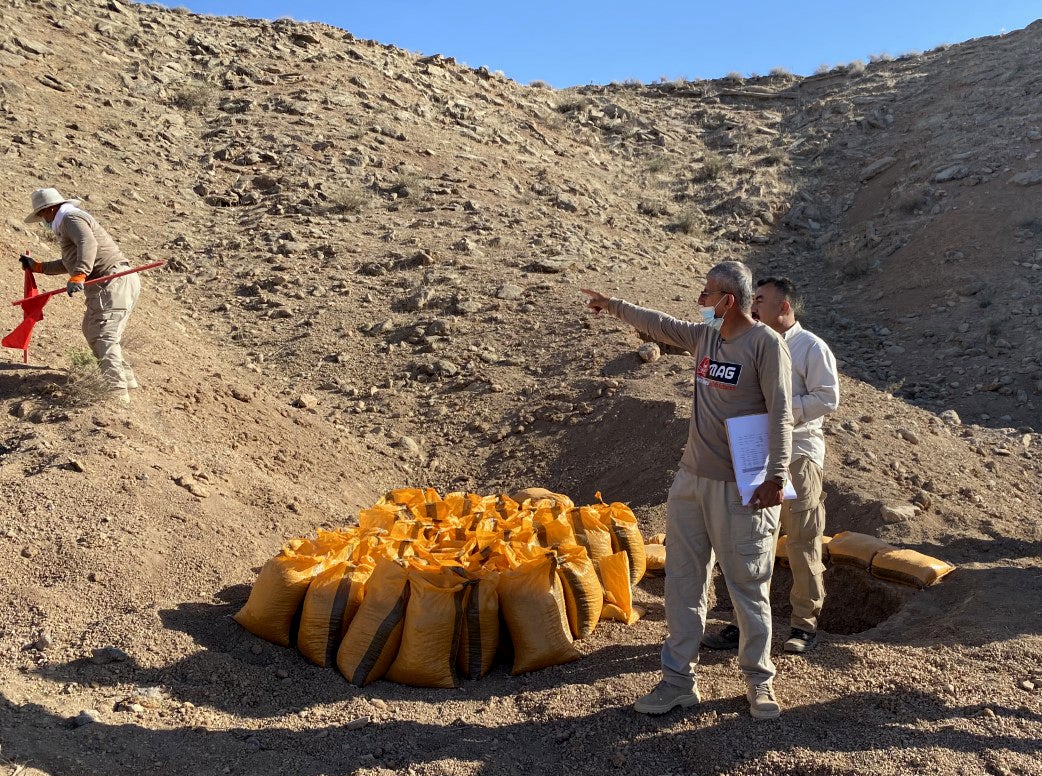
It’s a broad-brush approach, which only works in certain conditions, and sometimes there are explosions as mines are uncovered – the cabs of the diggers are heavily armoured to cope with such an eventuality.
Donning a heavy flak-jacket and helmet, I am led out into the minefield. The deminers operating the machines are depositing huge piles of soil, which will be manually checked with mine detectors and, when declared clear, relaid on the hillside before the area is returned to the local villagers as farmland that is once more safe to use.
The minefield I am led through is just 5m from some houses, which are still occupied. The nearest house to this 34,000sq m site literally abuts the demarcated zone at its corner. The front is scrawled with what looks like graffiti. I am told it says – perhaps somewhat optimistically – that the house is for sale.
MAG calls this heavy-plant demining a “technical” operation, but just up the road, above the village of Wlyawa itself, a more hands-on procedure is taking place.
This whole area was mined in 1986: about a million square metres of it up the mountainside, beyond which lies Iran. MAG estimates it will take about five years to clear, working with two teams of deminers.
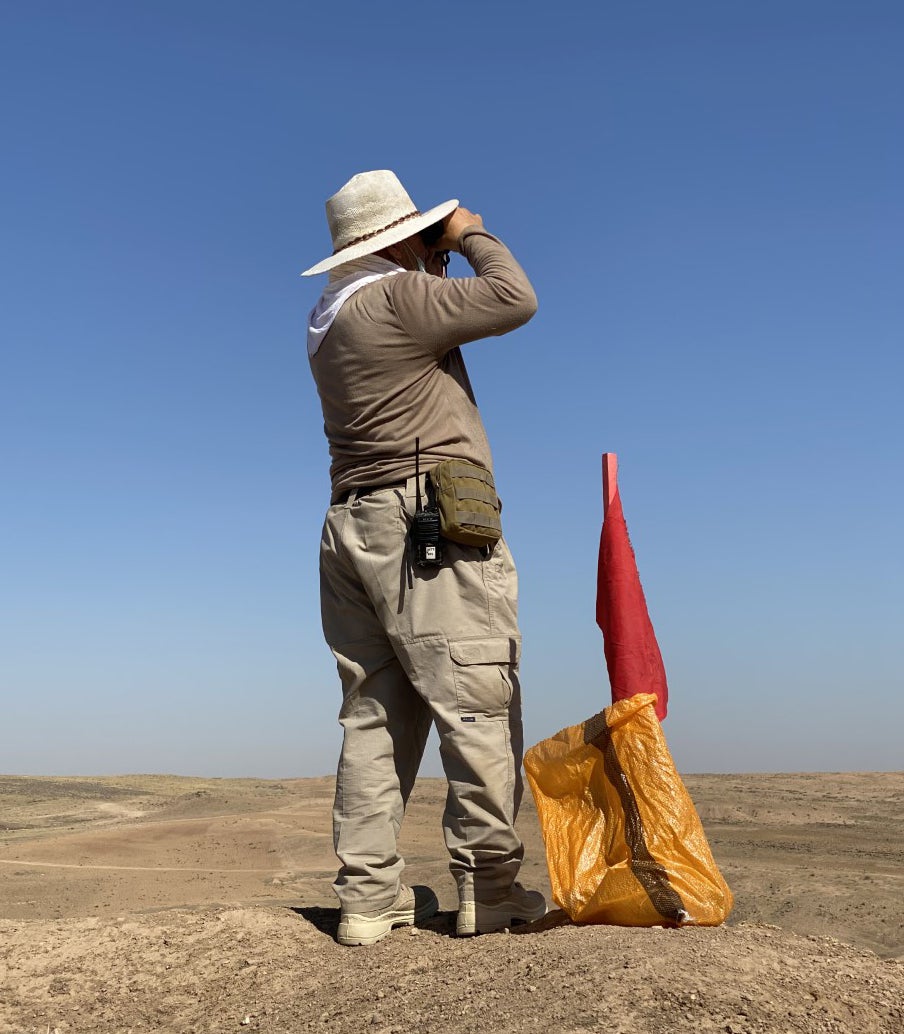
Chalak Taha is the head of one team, a tall, rangy, man with an unassuming air, who strides along the path marked out by the system of MAG demarcation posts – red triangles with a skull on them to denote the edge of the minefield, and a range of coloured sticks to mark out areas that have been cleared, where mines have been found, or where suspected ordnance lies.
He stops to point out something in the undergrowth: a fat plastic disc, half-buried. This is an Italian-made VS50 mine, commonly used in Iraq. It is designed not necessarily to kill, but to injure or maim, meaning that a soldier who stood on it would have to be carried off the battlefield by two or more comrades, taking at least three combatants out of the fray. The area is marked for a deminer to deal with.
A little further along the hillside, Taha is hailed by a member of his team. Another VS50 has been found. We are told to stand back while Taha lopes over, throws himself on his stomach, and reaches with his long arms to unscrew the detonator from the mine. He jumps back up and brings the now defused mine over, held aloft in one hand – the detonator in the other. The whole process has taken around 30 seconds and Taha has not broken a sweat, even in this sweltering heat, nor has his smile slipped.
He shrugs when asked about it and says he’s been doing this for 27 years. Wherever I go, and however many people I talk to who are working for MAG, I am greeted with the same quiet, modest heroism. Men and women are doing this day in, day out, throwing themselves onto the ground and defusing mines, or removing pieces of ordnance, as if it’s the most normal job in the world.
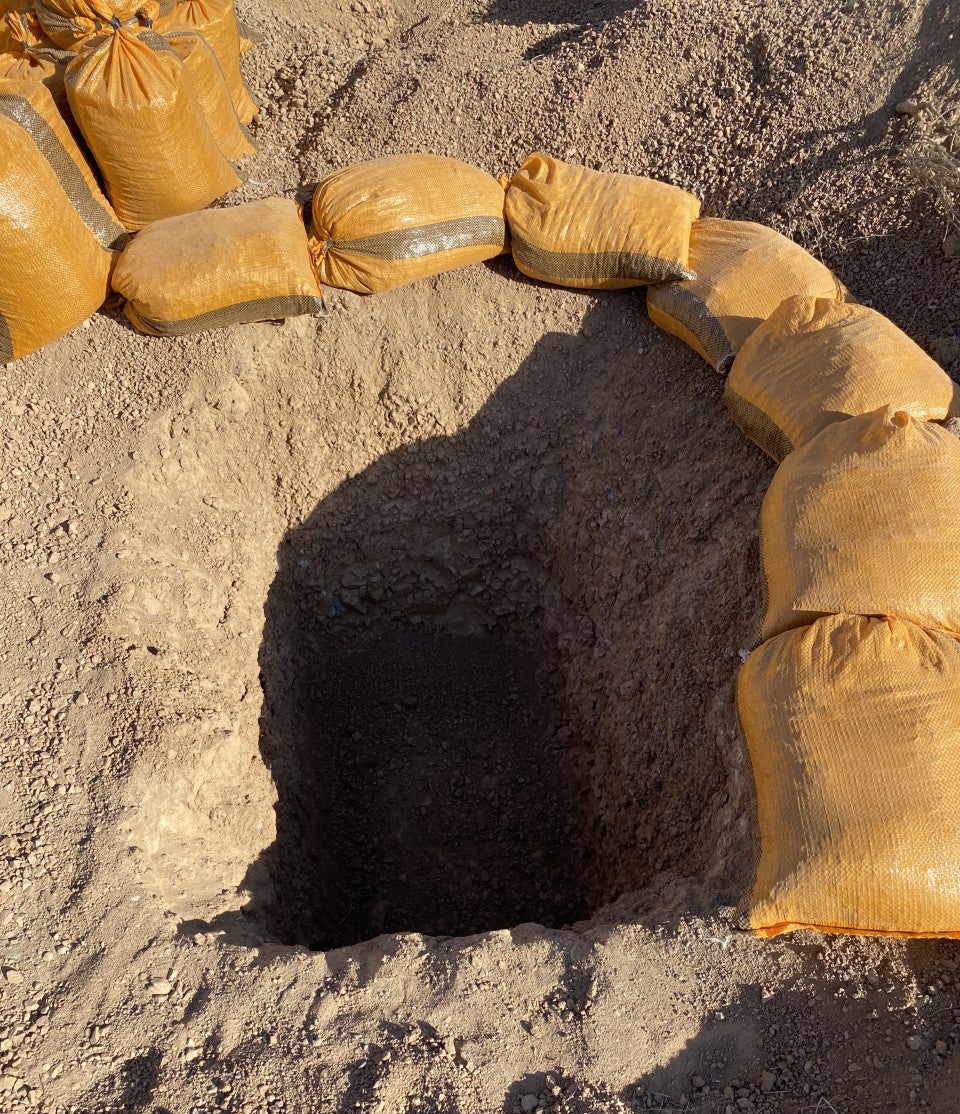
Each morning, before the day’s demining starts, the equipment is put through its paces in a small training zone. The mine detectors are like large metal-detectors: a piece of metal is hidden in a sandpit and the deminer sweeps the area, ensuring that the device beeps when it is supposed to. In a situation involving a real mine, he or she will then crouch down, mark the spot, and slide thin sticks into the ground to nudge the device so it can be properly dug out and disposed of.
It is vital that the machines are all fit for work: a detector failure could mean injury or death for the deminers.
In the relative cool of a shack on the edge of the minefield, over glasses of the strong, sweet chai favoured in this region, I speak to two of Taha’s demining team. Khalid Mohammad is 55 and has worked with MAG since 1994. Bakhtiar Mohammad is 46 and has been a deminer for ten years.
We have a Kurdish saying: if you move one rock from a place then you have made an improvement. That is what we are doing, but with mines
Khalid is married and has five children. Aren’t they terrified about their father’s job? He shrugs. “The kids are used to it. And they understand why I do it.” He points out of the open door at the hillside. “This area, it was like a prison. Nobody could use it. Now we are clearing it so kids can play here and people can graze their livestock.”
But what of his own fear? Surely spending all day defusing mines must weigh on a person. Again, he shrugs. “The fear doesn’t come from doing the job. We have been trained to do it. If we do it right, and follow the process, then nothing can happen.”
“The job is tiring,” admits Bakhtiar. “We are up at 3.30am and it is a long day. But we work because there is not a place or person around here that is not affected by landmines. I am not scared of the mines because I know what to do.”
Even the scale of the job does not faze them. Khalid says, “We have a Kurdish saying: if you move one rock from a place then you have made an improvement. That is what we are doing, but with mines.”
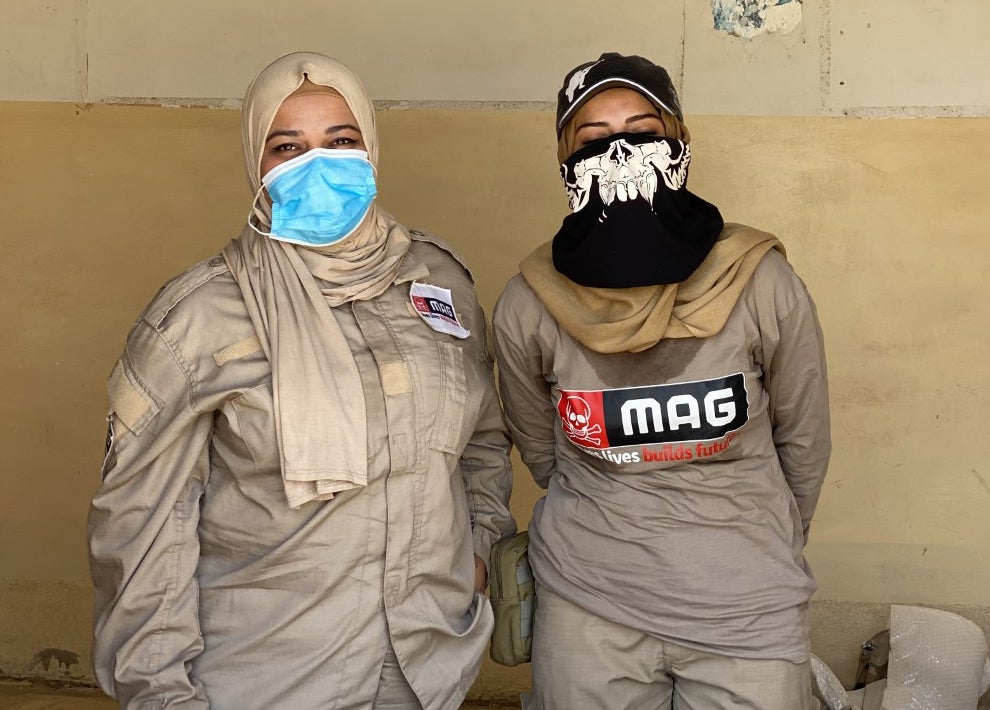
The village of Wlyawa is separated from the minefield by a mountain road. It was once home to 172 people, who were displaced by the war. Only four families have returned, but more are considering coming back as the area is cleared of mines. I am invited into one of the families’ homes to eat lamb, vegetables and rice that have travelled a matter of yards from field to plate, and am introduced to the village elder, or mukhtar, Hama Saeed.
He is evangelical about the work of MAG in his village, which he left in 1981 as the Iran-Iraq conflict began. He returned in 1991, but while that war was over, his was not. Saeed’s brother Shareek was killed on the family’s former agricultural land when he stepped on a mine. Three years ago, one of the deminers I spoke to earlier, Bakhtiar, found Shareek’s watch while clearing the land. The mukhtar still carries it with him.
“Our village was very beautiful,” he says. “It was destroyed by war. And long after the war we could still not return until MAG came and started to remove the threat from our village.”
Saeed is 66 now, his face weathered by the sun and his memories clouded by war and its aftermath. Mukhtar is a kind of ceremonial, voluntary position, but it is one he has vowed to maintain until his village is restored to its former glory. “I am not leaving this job until I have seen all the landmines removed,” he says stoutly. “These things, they are the enemy of humanity.”
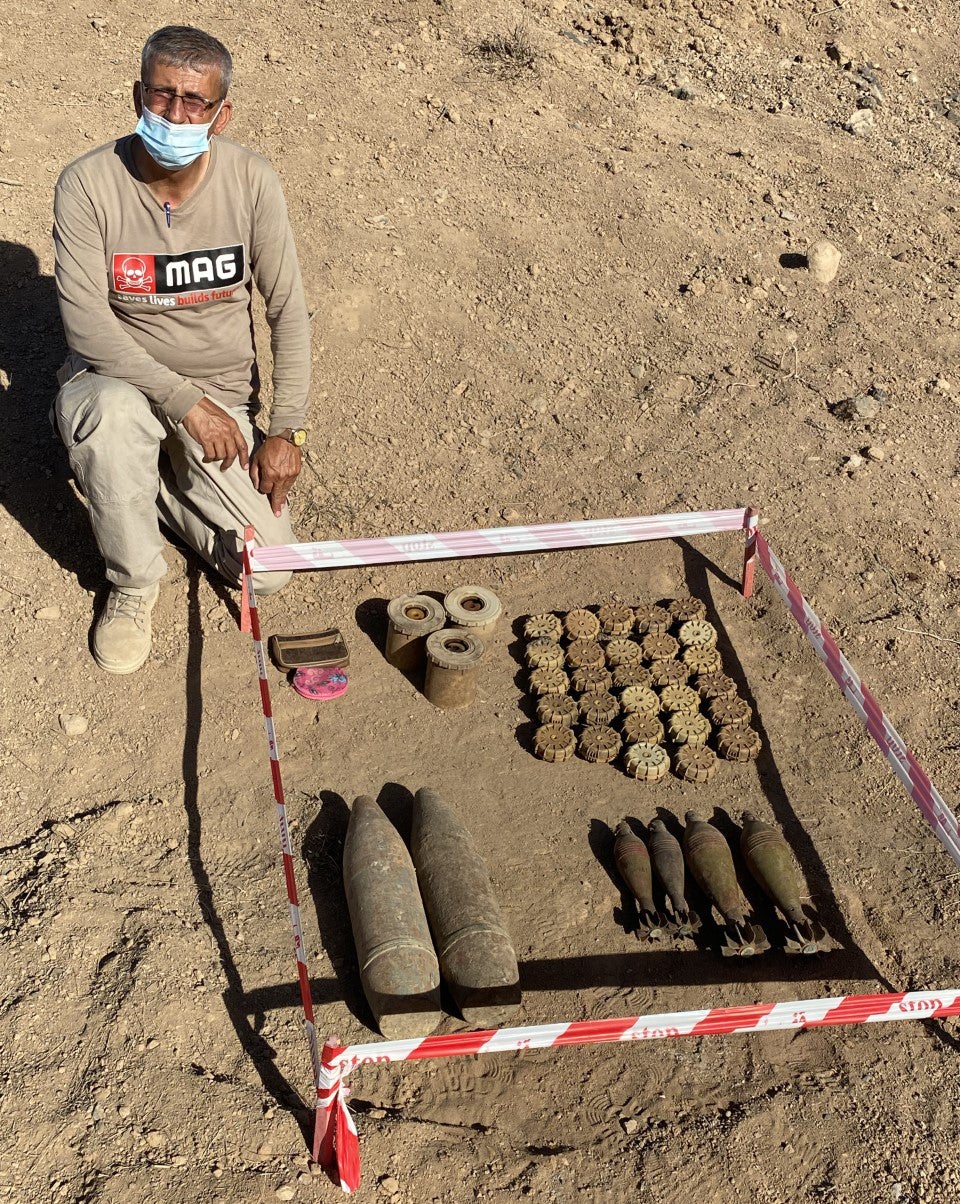
Sitting by the mukhtar is his old friend Sadiq Hassan, 77. He returned to Wlyawa at the same time, and the first thing he did was to rush out to his family’s land to make sure it was still useable. He suspected the land might be mined, and in spite of his caution, he was unlucky. Sadiq lost his foot, and dragged himself back to safety across the minefield on his stomach. He was taken to a hospital several hours away by tractor, where he underwent a nine-hour operation to save his life.
But, by degrees, the land is being claimed back for Wlyawa, and the elders hope the displaced families will return to farm the land.
MAG’s headquarters in this region are at Chamchamal, a low-rise secure compound off a busy main road, where oil tankers line up to go through checkpoints from early morning. This is where the admin relating to operations is dealt with, and where training takes place.
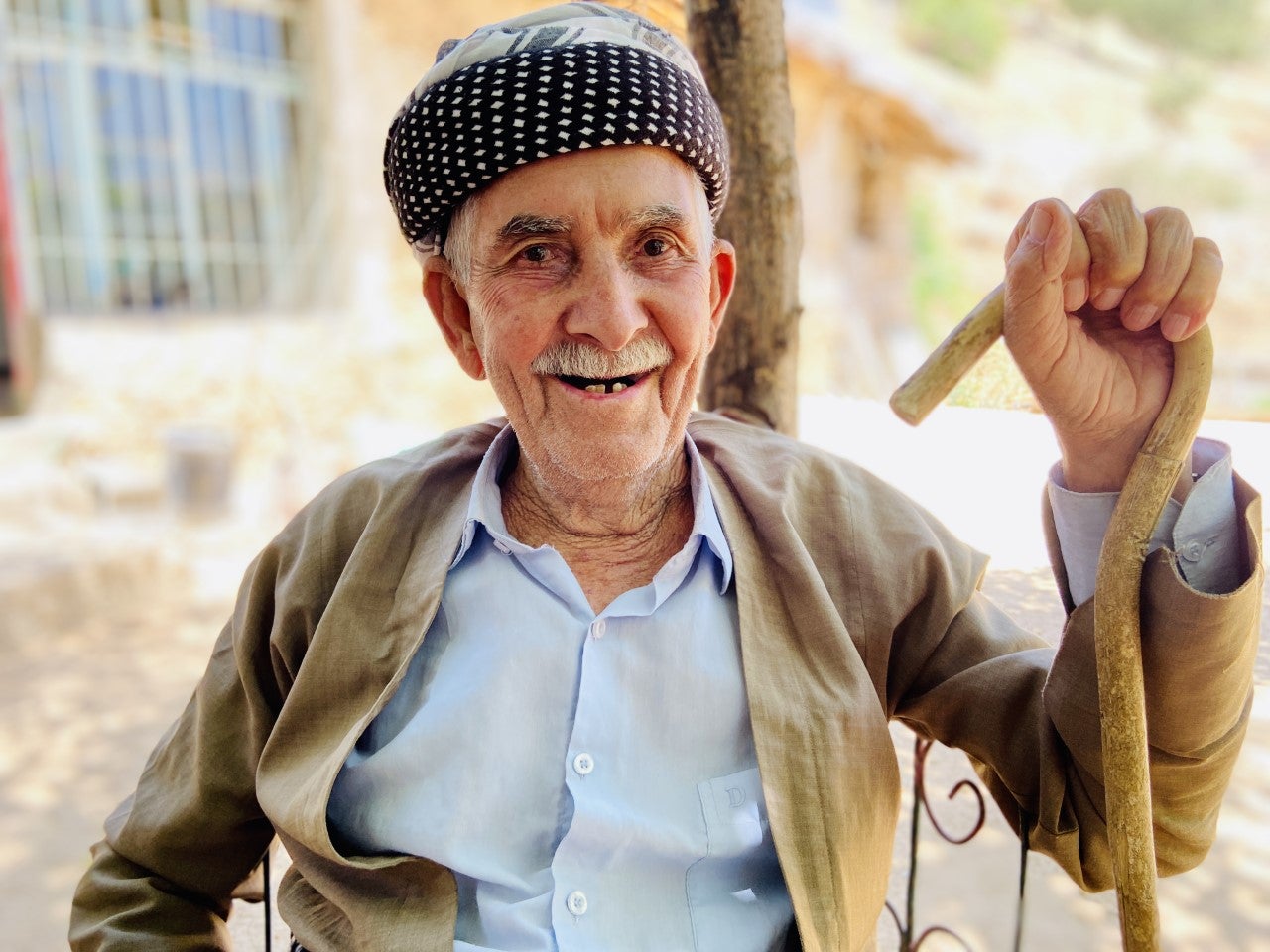
Salaam Muhammad has been with MAG ever since it began its operations in Iraq in 1992. He has a beaming smile, and a twinkle in his eye that belies his supreme professionalism as a hands-on deminer who has cleared thousands of pieces of explosive ordnance over almost 30 years. He speaks perfect English with a vaguely northern accent, which he puts down to learning the language from British army squaddies over the years.
As well as training the deminers to deal with the legacy mines left by the wars, he has also in the past decade been showing them how to defuse – and survive – the IEDs left by Isis, often in urban locations.
Which is why I am about to enter what Salaam calls the “house of horrors”.
It is on the edge of the MAG compound, a breeze-block-built house of the kind you can see from any road in northern Iraq. Salaam wants me to imagine I am a local person who has finally been allowed to return to their home after years of being displaced by Isis occupation.
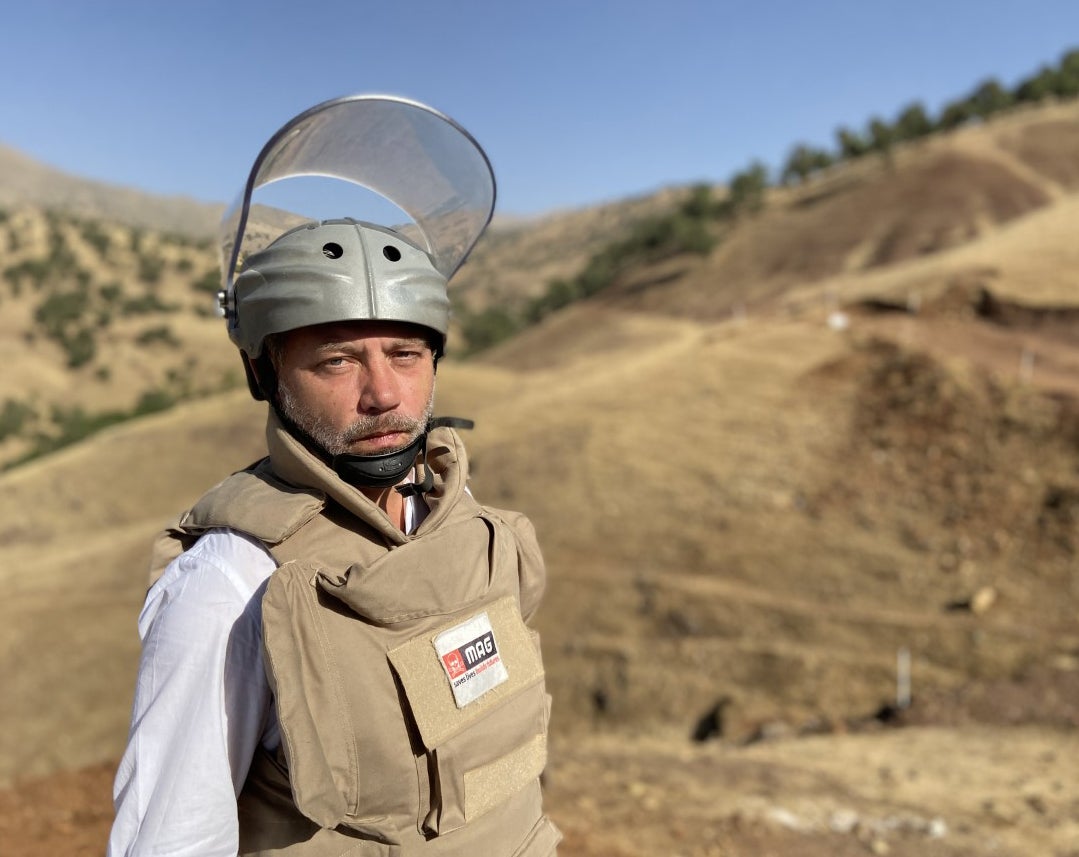
I walk up the steps to the small veranda. Immediately an alarm sounds as my leg activates an almost invisible tripwire. “Dead!” announces Salaam. He invites me into a room and says I must be hungry, look, there is a camping stove. I pick it up. “Dead!” he declares as an alarm sounds, simulating the explosion I would have triggered in real life. In every room is a hazard: a pile of shoes wired to an explosive; an infrared beam. “Dead! Dead! Dead!” shouts Salaam, as a volley of alarms sound.
The house of horrors is designed to show that when it comes to IEDs, the imagination of the Isis terrorists knows no bounds. Later Salaam shows me around a display of Isis-improvised devices. Explosives stuffed into kettles, grain tubs, even inside hollowed-out rocks placed on the ground. Everything is a potential hazard where Isis is concerned, and new recruits undergo the house of horrors induction to drive this home.
The legacy mines in the minefields are one front on which MAG is still fighting the wars that are – officially – long since over; the villages, towns and cities booby-trapped by Isis are another.
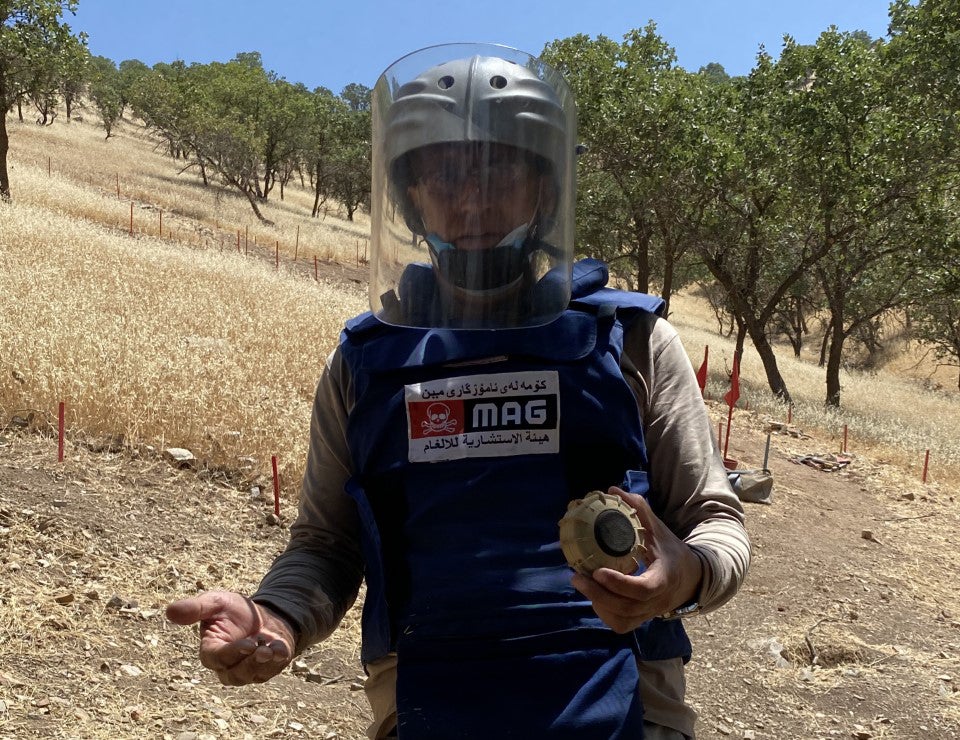
Tel Aswad is a ghost town situated off the main road between Erbil and Mosul. In 2014 it was occupied by Isis, and when the Islamist terrorists were driven out it became a Peshmerga defensive position.
MAG is slowly clearing every house of booby traps. It is a long and arduous process, involving several teams who search the houses, inch by inch. A wide patch of agricultural land between the village and the river is also being cleared.
Most of the people who fled from the Isis advance ended up in camps close to Erbil, and the hope is that, as Tel Aswad is cleared, they can return, and resume farming the arable land surrounding the town.
It’s eerie walking through the village: some houses are half-destroyed, while others look invitingly ordinary. MAG operatives have sprayed CLEAR in huge letters on the houses they have declared safe from IEDs.
One of the teams is a 10-strong all-female squad, all of whose members are in their twenties and from Mosul. I speak to two, Sahar and Shifaa, both 27. They have each been working with MAG for six months. Shifaa is also a technical engineering architect, and Sahar is training to be an English teacher alongside her MAG work, though there aren’t a huge number of jobs in their fields at the moment.
Life in Mosul was horrific under Isis occupation, especially for women. Both Sahar and Shifaa lost family members in the atrocities committed there. Both feel they needed to do something to help repair the damage Isis caused.
Sahar especially, being from a rural community just outside Mosul, found this difficult. She encountered strong opposition from her father and brothers when she said she wanted to be a deminer.
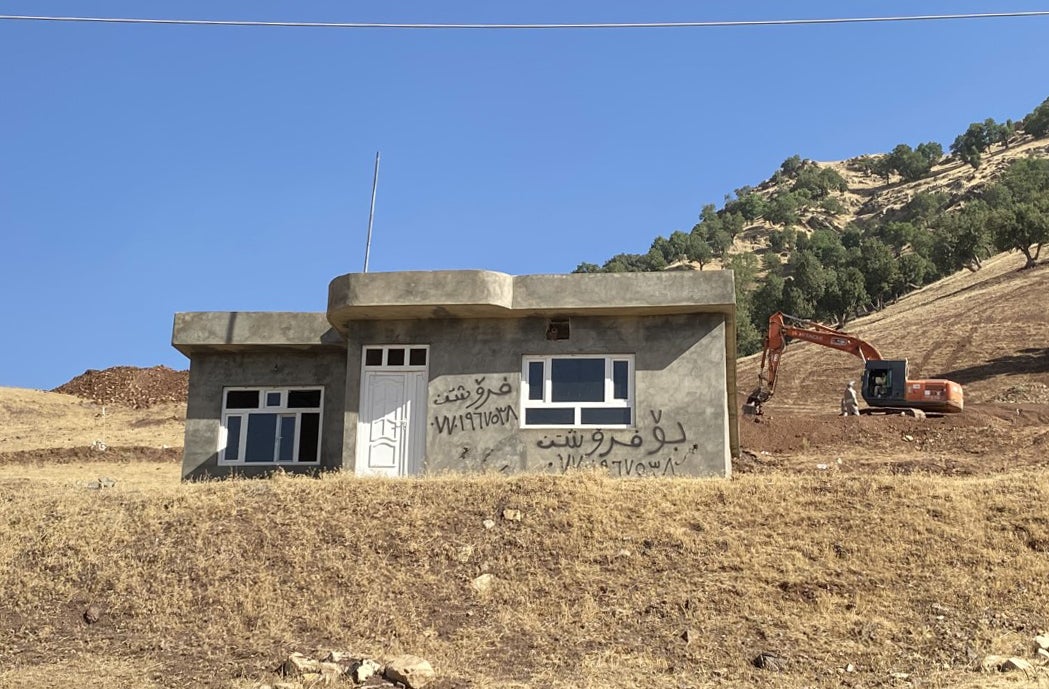
“I explained to my father what we do, how we are training to defuse mines, and he asks me if it safe,” she says. “Eventually he says, OK. And after my father changed his mind, my brothers, they said no. My uncle said no.” Sahar is forthright and exudes an inner strength. She rolls her eyes behind the facemask she is wearing, which she declines to remove for photographs. “But I had to work on them all and tell them I was going to do this.”
I ask the women what I asked the men in Wlyawa – aren’t they worried about the danger they face every day? Their answer is the same: they cannot get hurt if they follow their training. They have faith in how they have been taught to defuse ordnance by MAG, and in their own ability to do it.
“Besides,” says Shifaa, “we lived under Isis and we lost people and we saw people dying. So that pretty much prepared us for any danger in this work.”
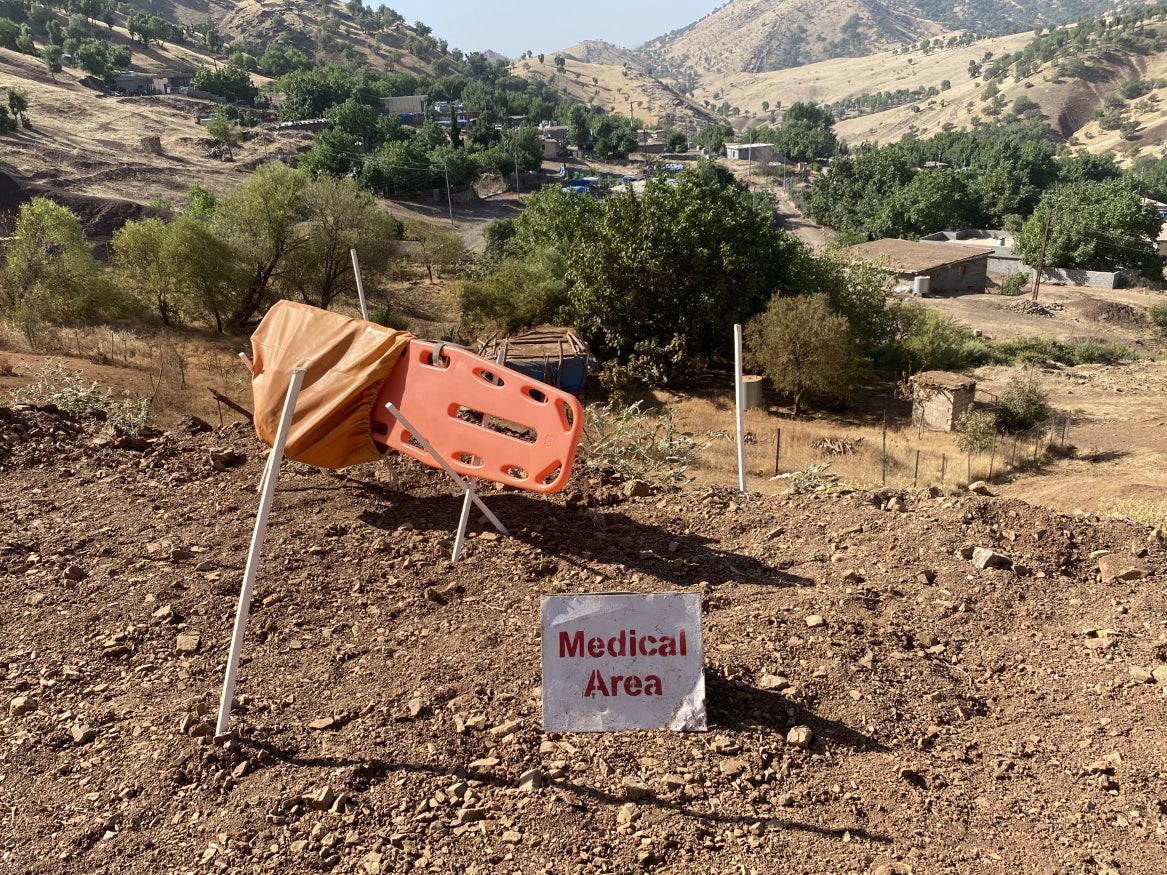
MAG employs local people in the territories in which it works because these are the people who know the land best. It also provides employment opportunities for communities ravaged by war and its aftermath. But there is also the fact that MAG’s local employees know their own people better than anyone, and that winning of hearts and minds is a vital weapon in MAG’s armoury.
Gona Hassan heads up the community liaison team in the region. Getting the local people onside for MAG’s work is vital. On one hand, it can keep them alive.
I watch as Gona’s team go into a house near Tulaband to teach a family what to do if they find an unexploded device.
Sattar, a man who knows this community well, explains to them that they should not touch anything they find. He places his mobile phone in the centre of the living room and shows how, if they should chance upon a device they don’t recognise, they should pivot where they stand and walk away from it, back along the way they came.
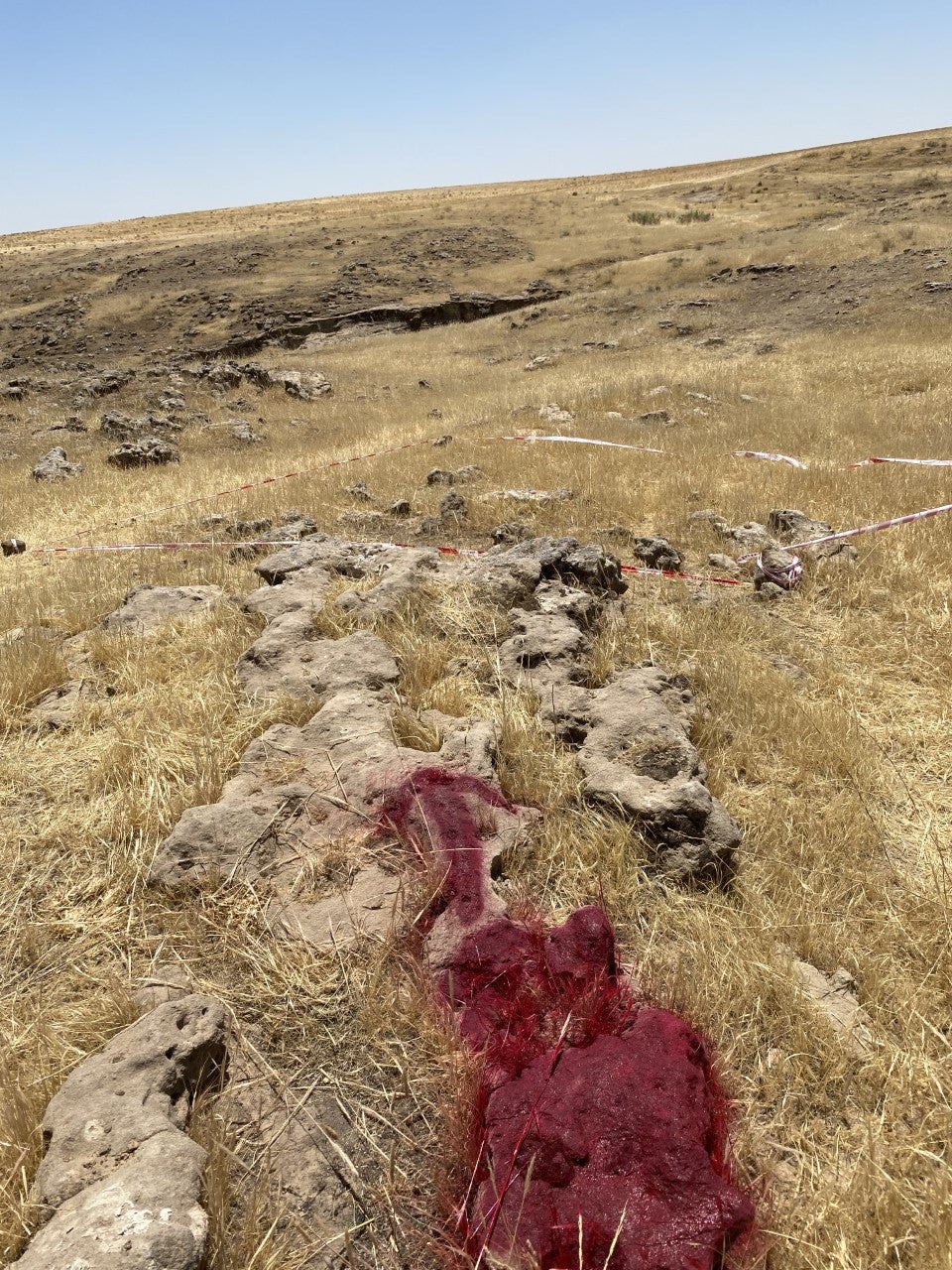
Games and worksheets are provided for the children, to educate them about the dangers. While the children’s faces light up when they are given a tube of coloured pencils, it is heartbreaking that it is necessary to teach them these things.
Local people are the eyes and ears of MAG. Back in Wlyawa, Gona proudly fusses over 14-year-old Awin, the daughter of a shepherd who is learning her father’s trade. She has called in dozens of sightings of devices around the village. The education programme has trained local people to do this and to embrace the work of MAG. It is what prompted Raad to report the mortar his sheep stumbled across on the plains above Tulaband.
Every Thursday, the road that runs through the desert at Laylan is closed off at either end so that MAG operatives, under the watchful eye of observers from the Iraqi Kurdistan Mine Action Agency, can safely destroy the devices that have been found.
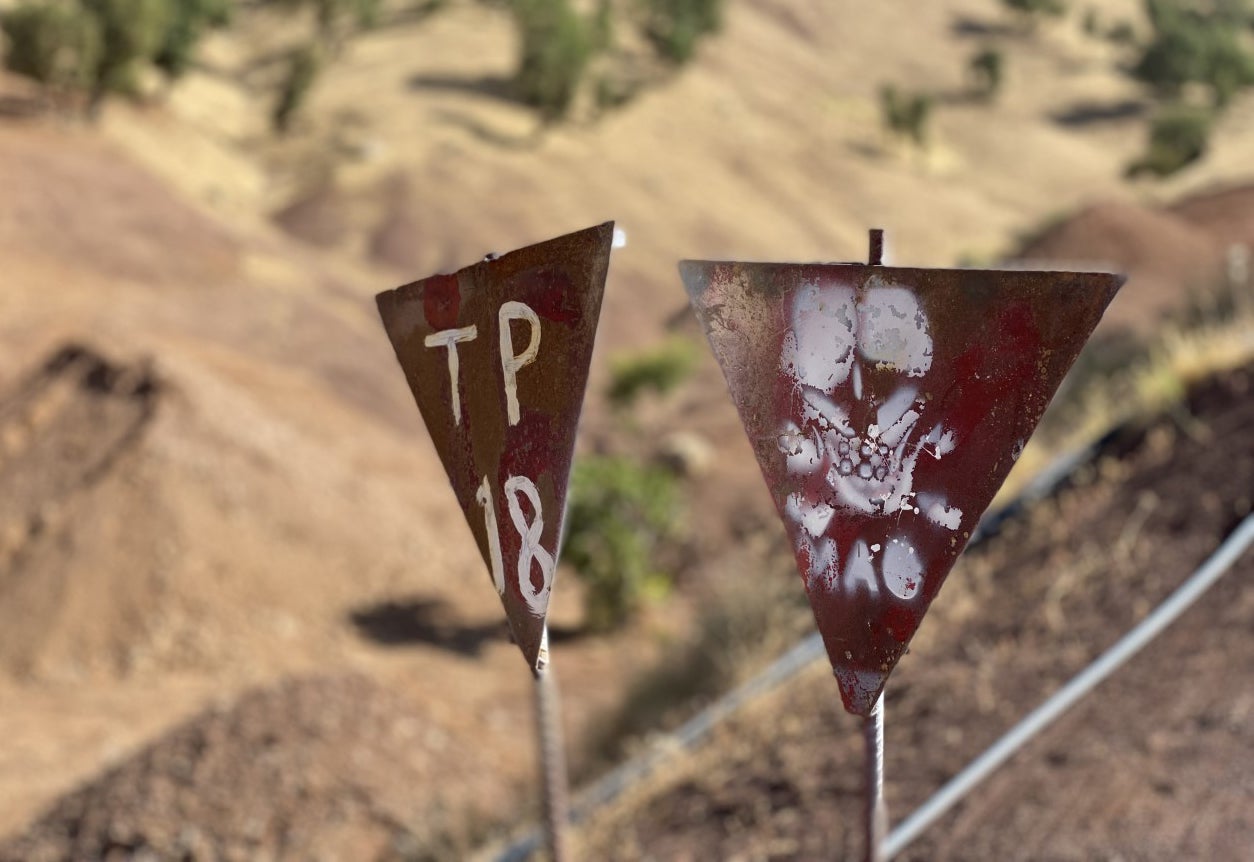
The VS50 that I watched Chalak Taha defuse with such consummate ease is among the week’s haul of mines, mortars and booby-traps that could not be safely detonated at the scene. In a cordoned-off area in the middle of the desert, the devices are placed in a large hole dug in the sand, together with plastic explosives. A long fuse is attached, and two MAG operatives hide in a bunker while others retire to a safe distance.
Even from some kilometres away a rumble can be heard in the ground, then a 40ft plume of dust and sand erupts into the sky, followed by an ear-shattering boom.
As MAG inches towards its mission of decontaminating the entire country, it is clear that there is much still to do, both for the group itself and for the hundreds of Iraqis and Kurds who have dedicated their lives to helping it in its goal.
Jack Morgan is MAG’s country director for Iraq. Based at their offices in Erbil, he is responsible for overseeing the NGO’s entire operation in Iraq. He started his role in September 2020, kicking off a three-year strategy that has a series of objectives including clearance programmes and risk education.
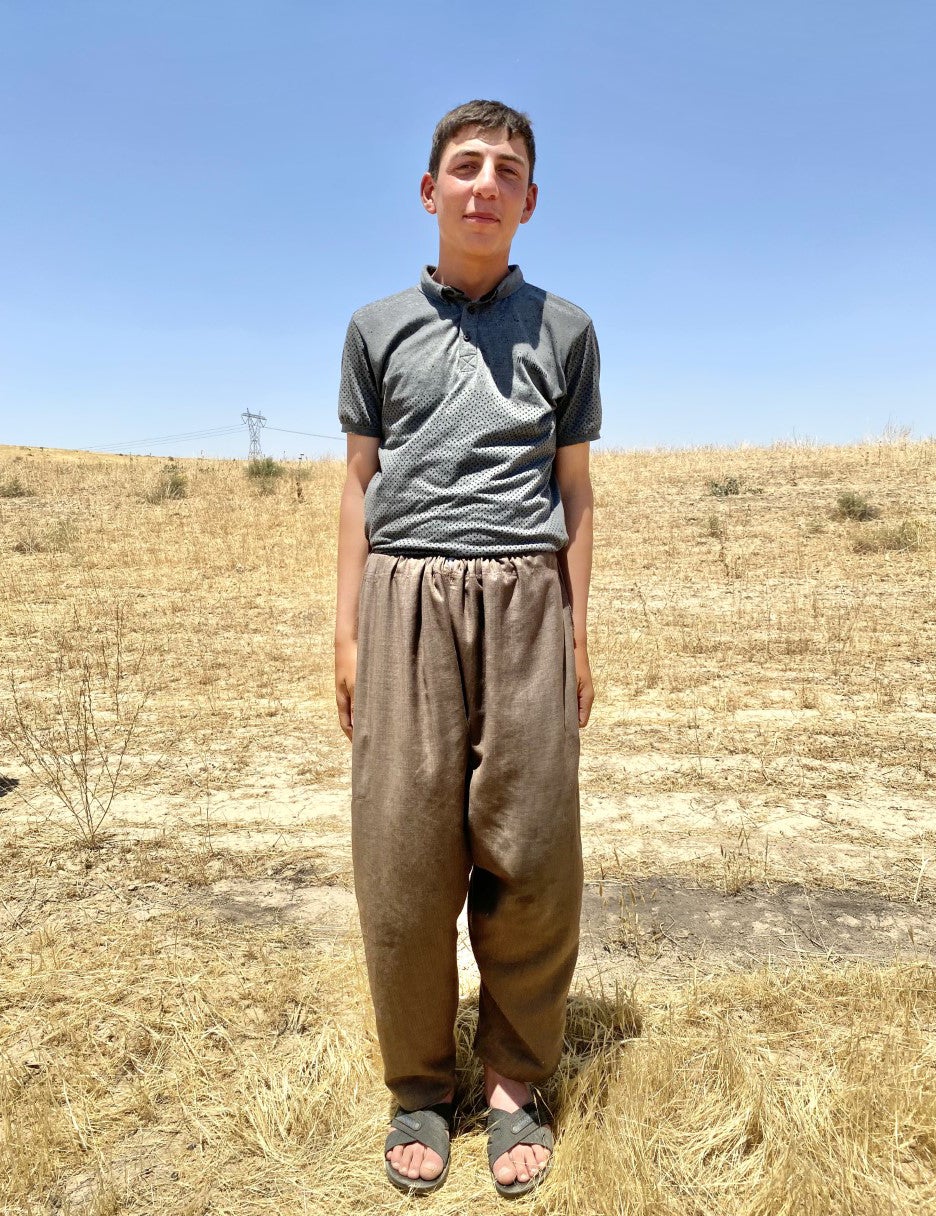
He says: “Iraq is a unique place to operate in a sense, because if you take a country like Cambodia, for instance, there is one government and one mine authority, while in Iraq we are dealing with the federal Iraqi government and the Kurdistan government, and they have different approaches.”
As a non-profit NGO, MAG relies on funding from a variety of sources, and this differs between territories. In Iraq, funding primarily comes from the US, the EU, Canada, Norway, the Netherlands, Sweden and Germany. Britain does not contribute, despite MAG being a British-based organisation and despite the UK’s involvement in past conflicts in the country.
The cost of MAG’s operations varies, but in an average year it’s about $20m (around £14.5m). And there is a long way to go before Iraq is even close to being free of mines.
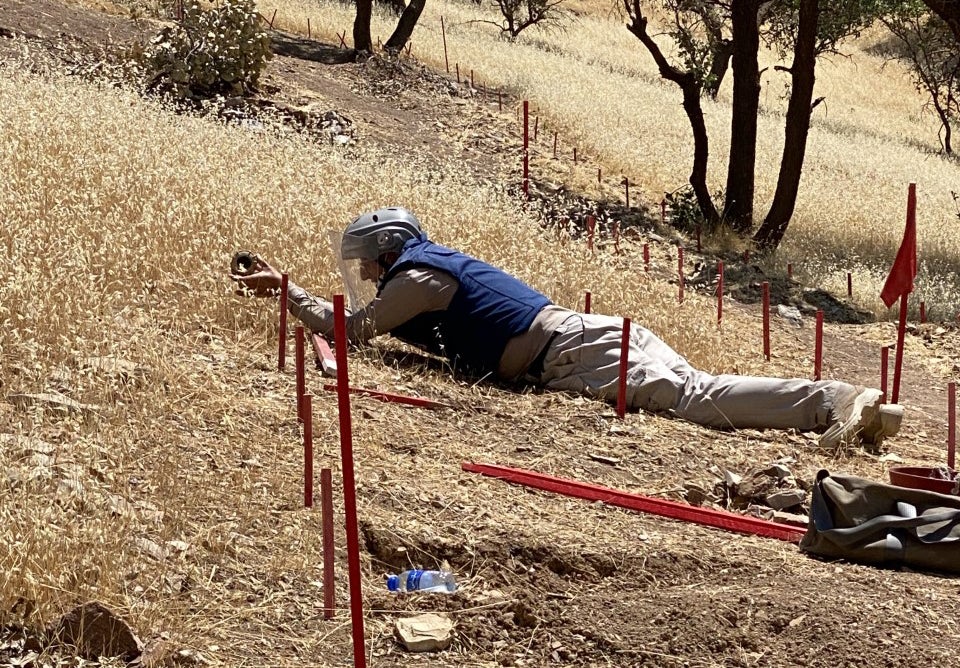
“The Falkland Islands have just been declared clear of contamination,” says Morgan. “That was a relatively short conflict, and it’s taken so long to clear it… it’s going to take a lot of time to do that in Iraq.”
How long will it take to clear Iraq? It’s impossible to say, replies Morgan. Innovation in mine detection and removal techniques is happening all the time, and could speed up the process. “Things in ten, 15, 20 years might look very different than they do now because of that,” he says.
What is helping is the appetite of people in Iraq and Kurdistan to help with the mission. MAG put out a call for applicants to become deminers in Mosul recently and had more than a thousand responses – and many of them were from women.
On the ground, there is no doubt that it’s going to be a big job, even though MAG has been working there for almost 30 years. Salaam Muhammad, of the twinkling eyes and wide grin, was once asked to hold up a poster for a photograph, saying Iraq had committed to becoming landmine-free by the year 2038.
“I refused,” he says, with a mischievous laugh. “Give me a sign that says 3038 and I’ll hold that.” Then, he says, more seriously: “But there is no land we cannot clear. We will do it, eventually.”





Join our commenting forum
Join thought-provoking conversations, follow other Independent readers and see their replies
Comments